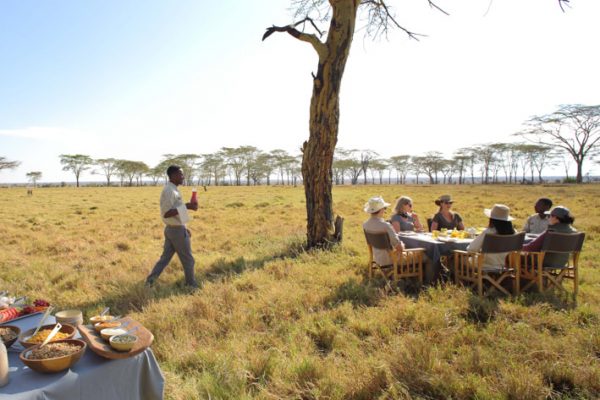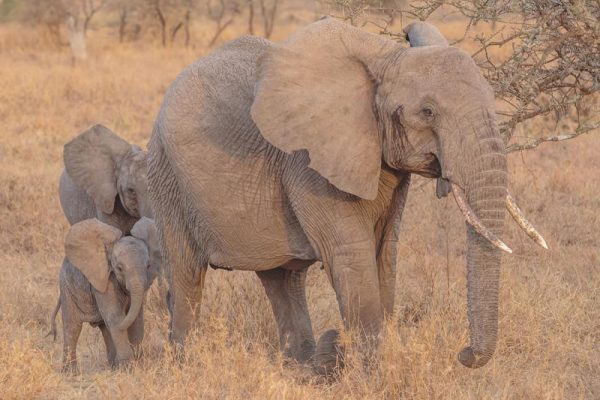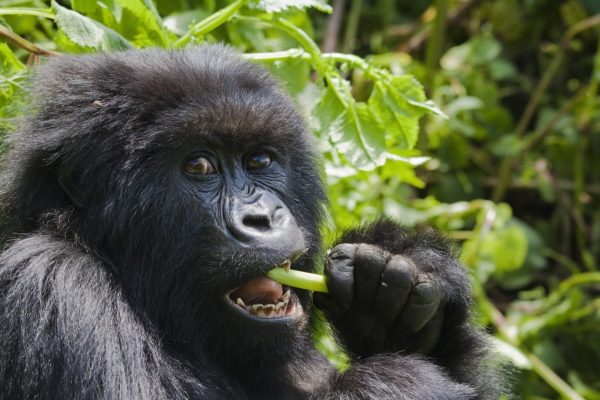The Great Wildebeest Migration in Serengeti, Tanzania A Beginner’s Guide
The Great Wildebeest Migration in Serengeti, Tanzania: Best time to see wildebeest migration in Serengeti, Tanzania, When is the wildebeest migration in Serengeti, Tanzania, Wildebeest migration which month, Where is the best place to see the wildebeest migration.
As one of Tanzania’s eight natural wonders, the Great Wildebeest Migration in the Serengeti is really awe-inspiring and should serve as the centerpiece of any ideal nature tour of northern Tanzania with The Bespoke African Safari Co. In March and April, the calving grounds in the southern Serengeti are traversed by some 1.5 million wildebeests, hundreds of thousands of zebras, elands, gazelles, and a trailing entourage of predators as they seek out a new water source.
Hiking from the outskirts of Seronera in the south-central region into the Grumeti River and the Western Corridor, where you will arrive in April or May and stay until June. From there, you will trek towards the Masai Mara National Reserve in Kenya, crossing the treacherous Mara River in July or August. From there, you will return via the same treacherous river, this time heading towards the eastern Serengeti bearing of Lobo and Loliondo in October or November.
Wildebeest Migration in Serengeti, Tanzania
With arrivals beginning in December and temporary residence lasting until March (for more information on the ideal time to visit the Serengeti), the white bearded wildebeest continue their migration back to the southern Ndutu calving grounds.
The yearly rainfall and the regrowth of new pasture, which could happen earlier or later in different years, determine the exact dates and times of the migration. The wonder of a Tanzanian photo safari is well worth the trouble, though, as hordes of wild gnus flood the plains, united in their pursuit of rut, mating, daring, and death on this incredibly dangerous journey that guarantees the wildebeests’ survival and the Serengeti ecosystem’s continuation, whether driven by instinct or necessity.
Great Serengeti Migration
Great Wildebeest Migration in Serengeti, Tanzania
The Great Wildebeest Migration in Serengeti, Tanzania, Their heroic quest is one of ferocity and tenacity as they fight their way north to safety, passing by granite kopjes where lions or cheetahs lie in ambush, across crocodile-infested rivers swollen by floods, and across arid plains charred by wildfires. Then, focusing on far-off rains, they circle back, taking on more risks due to the same water, fatigue, and predators, and losing 25% of their population along the way.
You have to be a part of this phenomenon to fully understand its magnitude. You can track and observe from 4×4 game-viewing vehicles, film from the ground or from the air in a hot air balloon to get up close and personal with the action, as if the endless grasslands were your theater and your cast of millions were performing their age-old ritual just for you.
Tarangire, Serengeti And Volcanoes Itinerary
Days: 13 | Nights: 12
This Tarangire Serengeti And Volcanoes Itinerary contains all of the elements needed to make a safari masterpiece. Unrivaled service at intimate estates, beautiful places dedicated to the preservation of Africa’s animals.
Masai Mara, Serengeti And Zanzibar Itinerary
Days: 11 | Nights: 10
11 Days A Full Detailed Itinerary for Masai Mara, Serengeti and Zanzibar (for group/family) takes to Kenya’s Masai Mara and Tanzania’s Serengeti in search of predators and prey followed by a blissful seaside.
Gorilla Trekking and Great Migration Itinerary
Days: 12 | Nights: 11
Experience Gorilla Trekking and Great Migration in this one-of-a-kind luxury bucket list Gorilla Trekking and Great Wildebeest Migration Tour showcasing 4 iconic wildlife destinations in East Africa. You’ll visit four renowned East African.
Best Time to View Wildebeest Migration in Tanzania
Great Migration Safari Holidays: the basics
- The Great Migration is a year-round spectacle in Tanzania, as the animals travel in a ring around Serengeti National Park. What follows is an analysis of the typical locations of the wildebeest throughout the year.
- The Masai Mara in Kenya is an uncommon stop for the Great Wildebeest Migration. The herds only go there when they require new pastures, as it is an extension of their grazing grounds in northern Tanzania. Only in the early months of the year can you see the migration in Kenya as the herds make their way to the border; and even then, the majority of the herds are still wandering the northern Serengeti anyway.
The Great Migration – Wildebeest Migration from the Serengeti to the Masai Mara, Crossing Mara River
The Annual Wildebeest Migration Tanzania overview
July – October:
Thousands upon thousands of wildebeests may be visible as they ford the vast Mara River during this time of year in the northern Serengeti plains. Many people think that this is the best time to view the migration because it is so spectacular to see the wildebeest cross the.
December – March:
It is calving season for the wildebeest, and they may be seen in the southern Serengeti region, most especially in Ndutu, which is part of the Ngorongoro Conservation Area. Along with the fording of rivers, this is one of the most exciting parts of the wildebeest migration since it allows viewers to witness the herds converge on the breathtaking southern plains. Due of their annual migration south during calving season, large herds are virtually always visible in February.
The rest of the year: In November, April, May and June
Seeing the herds during these months is a bit of a transitional experience because the migration is “in between” regions. Grass is verdant across the Serengeti during the months of April and May due to the long rains, and wildebeests are more distributed than during the ideal months of July to October and December to March, when the rains are brief. As a result, there aren’t as many of those crowded large herds that everyone loves!
We do our best to be thorough, but there are some things that are easier to explain over the phone than on paper, so if you would want a brief summary of the Migration’s path, please don’t hesitate to call us.
Wildebeest facts: Why does the Great Migration occur & why do the Wildebeest Migrate
Wildebeests travel to the Masai Mara and back again around the Serengeti just to follow the rain. They start their calving cycle in the Southern Serengeti area of Ndutu every December and continue wherever the grass is greener… from March onwards. Although we can generally predict where wildebeest should be at any certain time of year, their actual whereabouts are highly dependent on the location of the precipitation. Although the vast majority of wildebeests travel in a clockwise direction from the southern Serengeti to the northern Serengeti and back again, large herds can be famously difficult to anticipate due to their penchant for zigzagging.
Crazy Great Migration Mara River Crossing in Serengeti – Tanzania Safari
Where to Stay for The Great Wildebeest Migration Tanzania
Safaris at one of the world-renown Serengeti mobile camps are the way to go if you want to witness the Great Migration of zebras and wildebeests up close and personal. Depending on the herds’ typical whereabouts at any given time of year, the movable camps are put up at different areas twice or thrice a year.
Two nomadic camps stand out from the crowd thanks to their dedication to tracking the herds: Serengeti Safari Camp by Nomad Tanzania and Serengeti Under Canvas by &Beyond. As the herds travel to more than two locations during the year (the typical itinerary of most other mobile camps), these two operations will be present nearby or among the herds at all times. Now we reach the twice-yearly mobile camps of Serian (Alex Walker), Olakira (Asilia), Ubuntu (Ubuntu), and Kimondo (Kimondo), which provide excellent mobile operations from July to November and December to March, respectively. Amazing camps like these are closed for the season.
If you’re not quite up for the adventure of staying in a tent on your Tanzania safari, there are plenty of permanent lodges in the Serengeti that provide all the amenities you need and are located in prime spots to view the herds. You may see a seasonal summary of the herds’ movements and recommendations for the top permanent lodges to stay at here.




